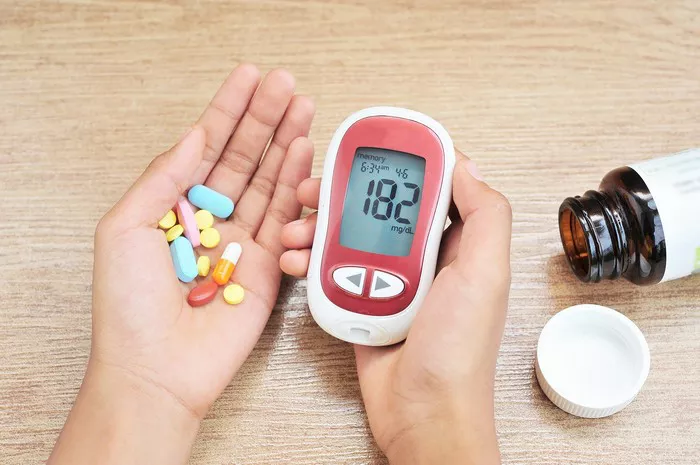Insulin resistance is a condition in which the body’s cells become less responsive to insulin, leading to elevated blood sugar levels. It is a significant risk factor for type 2 diabetes, obesity, and cardiovascular diseases. While medical intervention is sometimes necessary, many people seek natural ways to manage and treat insulin resistance effectively. This article explores several natural approaches, including dietary changes, physical activity, stress management, and other lifestyle modifications.
Understanding Insulin Resistance
Before diving into natural treatment options, it is essential to understand what insulin resistance is and how it affects the body.
What is Insulin?
Insulin is a hormone produced by the pancreas that plays a crucial role in regulating blood sugar levels. It allows cells to take in glucose from the bloodstream, which they use for energy. When the body becomes resistant to insulin, glucose remains in the blood, leading to higher blood sugar levels.
Causes of Insulin Resistance
Several factors contribute to insulin resistance:
Obesity: Excess body fat, especially around the abdomen, is a primary contributor.
Sedentary Lifestyle: Lack of physical activity can decrease the body’s sensitivity to insulin.
Poor Diet: Diets high in refined carbohydrates, sugars, and unhealthy fats can lead to insulin resistance.
Hormonal Changes: Conditions like polycystic ovary syndrome (PCOS) can contribute to insulin resistance.
Genetics: A family history of diabetes or insulin resistance can increase the risk.
Chronic Inflammation: Inflammation in the body can affect insulin sensitivity.
Symptoms of Insulin Resistance
Insulin resistance can manifest through several symptoms, including:
- Fatigue
- Hunger and cravings
- Difficulty concentrating
- Weight gain, particularly around the abdomen
- High blood pressure
- Skin changes, such as dark patches or skin tags
Recognizing these symptoms early can help individuals take proactive steps to improve their insulin sensitivity.
Natural Treatment Approaches for Insulin Resistance
Treating insulin resistance naturally involves a multifaceted approach, focusing on diet, exercise, and lifestyle changes. Here’s a comprehensive guide to effectively managing insulin resistance.
1. Dietary Changes
The food you consume plays a crucial role in managing insulin resistance. Here are some dietary strategies that can help improve insulin sensitivity:
Focus on Whole Foods
Minimize Processed Foods: Processed foods often contain added sugars, unhealthy fats, and refined carbohydrates that can spike blood sugar levels. Choose whole, minimally processed foods.
Fruits and Vegetables: Incorporate a variety of colorful fruits and vegetables into your diet. They are rich in fiber, vitamins, and antioxidants that can help reduce inflammation and improve insulin sensitivity.
Choose Healthy Fats
Unsaturated Fats: Include sources of healthy fats, such as avocados, nuts, seeds, and olive oil. These fats can help improve insulin sensitivity and reduce inflammation.
Omega-3 Fatty Acids: Foods rich in omega-3 fatty acids, such as fatty fish (salmon, mackerel), flaxseeds, and walnuts, can also have anti-inflammatory effects.
Reduce Carbohydrate Intake
Low Glycemic Index Foods: Opt for foods with a low glycemic index (GI), which cause a slower rise in blood sugar levels. Examples include whole grains, legumes, and most vegetables.
Avoid Refined Carbohydrates: Limit foods like white bread, pastries, sugary snacks, and sweetened beverages, as they can lead to rapid spikes in blood sugar.
Increase Fiber Intake
Soluble Fiber: Foods high in soluble fiber, such as oats, beans, lentils, and fruits, can help improve insulin sensitivity by slowing down the absorption of sugar.
Aim for 25-30 Grams: Strive to consume at least 25-30 grams of fiber per day to support digestive health and stabilize blood sugar levels.
2. Regular Physical Activity
Exercise is one of the most effective natural treatments for insulin resistance. Here’s how physical activity can help:
Types of Exercise
Aerobic Exercise: Activities like walking, jogging, swimming, and cycling can improve insulin sensitivity. Aim for at least 150 minutes of moderate-intensity aerobic exercise per week.
Strength Training: Incorporate resistance training exercises, such as weight lifting or bodyweight exercises, at least twice a week. Building muscle mass can enhance glucose uptake and improve insulin sensitivity.
High-Intensity Interval Training (HIIT): Short bursts of high-intensity exercise followed by rest periods can significantly improve insulin sensitivity and overall metabolic health.
Consistency is Key
Make it a Habit: Establish a regular exercise routine that fits your lifestyle. Consistency is crucial for reaping the benefits of physical activity in managing insulin resistance.
3. Stress Management
Chronic stress can negatively impact insulin sensitivity. Here are some strategies for managing stress naturally:
Mindfulness and Meditation
Practice Mindfulness: Engage in mindfulness practices, such as meditation, deep breathing exercises, or yoga. These techniques can help reduce stress levels and improve overall well-being.
Quality Sleep
Prioritize Sleep: Aim for 7-9 hours of quality sleep each night. Poor sleep can lead to increased insulin resistance and hormonal imbalances.
Sleep Hygiene: Establish a regular sleep routine, create a comfortable sleep environment, and limit screen time before bed.
4. Maintain a Healthy Weight
Weight loss can significantly improve insulin sensitivity, especially in individuals who are overweight or obese. Here are some tips for achieving and maintaining a healthy weight:
Set Realistic Goals
Focus on Gradual Changes: Aim for a gradual weight loss of 1-2 pounds per week. Quick fixes are often unsustainable and can lead to weight regain.
Keep Track of Your Progress
Food Diary: Keeping a food diary can help identify patterns in eating habits and promote mindful eating.
Monitor Your Weight: Regularly track your weight to stay accountable and motivated.
5. Consider Natural Supplements
Some natural supplements may help improve insulin sensitivity. Always consult a healthcare professional before adding supplements to your routine.
Cinnamon
Cinnamon Extract: Studies suggest that cinnamon may help lower blood sugar levels and improve insulin sensitivity. Adding cinnamon to your diet can be a delicious and easy way to support insulin resistance management.
Berberine
Blood Sugar Regulation: Berberine, a compound found in several plants, has been shown to improve insulin sensitivity and lower blood sugar levels. It may be beneficial for those with insulin resistance.
Alpha-Lipoic Acid
Antioxidant Benefits: This powerful antioxidant may help improve insulin sensitivity and reduce oxidative stress. It is available as a supplement and found in foods like spinach and broccoli.
Omega-3 Fatty Acids
Fish Oil: Supplementing with omega-3 fatty acids can reduce inflammation and improve insulin sensitivity. However, it’s best to get these from whole food sources like fatty fish whenever possible.
6. Limit Alcohol Consumption
Excessive alcohol intake can lead to insulin resistance. Here are some guidelines:
Moderation: If you choose to drink alcohol, do so in moderation. This means up to one drink per day for women and two drinks per day for men.
Hydration: Stay hydrated by drinking water alongside alcoholic beverages to mitigate the negative effects.
7. Stay Hydrated
Proper hydration is essential for overall health and can support metabolic functions:
Drink Plenty of Water: Aim for at least 8-10 cups of water daily. Staying hydrated helps maintain optimal metabolic function and supports overall health.
Limit Sugary Drinks: Avoid sweetened beverages and sodas that can contribute to insulin resistance.
8. Regular Health Check-Ups
Monitoring your health is vital in managing insulin resistance:
Regular Blood Tests: Keep track of your blood sugar levels and consult with your healthcare provider about your progress.
Screening for Diabetes: If you have insulin resistance, regular screening for type 2 diabetes is essential. Early detection can help prevent complications.
See also: What is a Good Insulin Resistance Score?
Conclusion
Treating insulin resistance naturally requires a comprehensive approach that includes dietary changes, regular physical activity, stress management, and lifestyle modifications. By making these changes, individuals can significantly improve their insulin sensitivity and reduce the risk of developing type 2 diabetes and other related health issues.
Each person’s journey is unique, and it’s crucial to consult healthcare professionals to create a personalized plan that fits individual needs and circumstances. Embracing a healthier lifestyle can lead to long-term improvements in insulin sensitivity and overall health. With dedication and commitment, it is possible to manage and even reverse insulin resistance naturally.
Related topics:
What Foods Reduce Insulin Resistance?



























